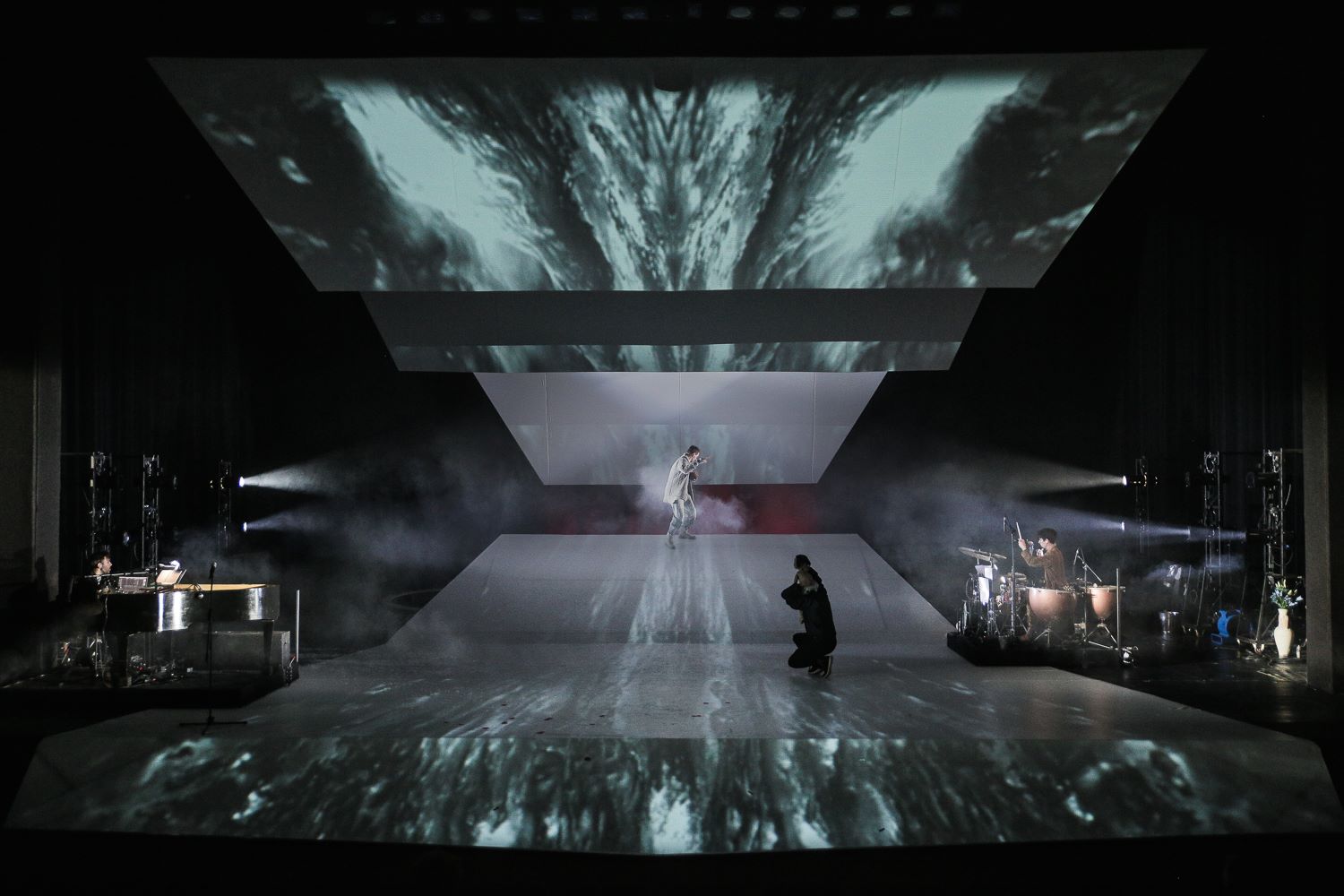Wege des Helden - Siegfried
Theatre Production
Dir: Donald Berkenhoff
Prod: Stadttheater Ingolstadt, 2019
Credit: Composer, Musical Direction
Music Performed by: Anders Ehlin & Jakob Dinkelacker
Instrumentation: Digitally Prepared Piano, Percussion,
Transient and pitch Sensitive Triggers, FM Synthesisers,
Drum Machines, Loop Pedal, Metal Plates equipped
w. Transducers, Vocals, Computer w. Ableton Live.
Written About The Music:
’All these images, combined with the live music, develop a pull that is hard to resist. Swedish composer Anders Ehlin has developed some electroacoustic trickery producing throbbing, pulsating, rattling, enervating soundscapes, experimental and monumental, archaic songs and wafting, blown past echoes from bygone dreams. And together with Jakob Dinkelacker on drums, he creates a mystical atmosphere on the grand piano.’ #Donaukurir
’…however, quite amazing is the simply breathtaking new tonalism by the on-stage integrated musicians Anders Ehlin (piano) and Jakob Dinkelacker (drums)’ #Augsburger Algemeine
Donald Berkenhoff’s interpretation of the Icelandic Edda tales, predominantly made famous through Richard Wagner’s Der Ring des Nibelungen, brings the different iterations of the tales together in both a humorist and stern way. It brings into play traditional Christian questions around vanity, egocentrism, altruism and shortsightedness, combined with current socio-political shifts and gender inequality, not the least through the undeniable brutal rape of the valkyrie Brunhild at the peak of the story. The musical direction of the piece had to balance a spectrum of wishes from the director, reaching from cabaret to dadaism, Northern archaic folklore, the omnipotent presence of Wagner, as well as uninhibited cinematic drama and action.

Berkenhoff integrated the instruments, the musicians and the musical performance centrally into the stage plot already in the script writing stage, providing a physical meta layer reminding the audience that theatre is a narrative construction, thereby challenging but paradoxically also strengthening the immersive aspects of the whole performance. A grand piano and a battery of drums were installed on two mobile podiums, which were moved into different locations on stage depending on the stage topological needs and the stage’s current position and angle.
Renate Knollmann, playing the Icelandic goddess Freya, had sung entries in the script already at conception stage. With these as a starting point the leitmotif of the play was composed, utilising the vocal technique of Swedish cattle calls (Kulning) with lyrics picked from Swedish medieval ballads based on the same Icelandic lore, and composed with a similar modal harmony over a pedal note, often heard in old nordic musical traditions.
Utilising a collection of scrap and found metal objects, long passages were rather composed for two improvising percussionists in call response fashion (rather than the more standardised piano/drums melody/rhythm configuration), where the piano body acted as resonating board or drum, played with mallets. Equipped with contact microphones it also served as a trigger board for amplitude and pitch responsive FM Synthesis, providing a parallel layer to the acoustic framework.


Different ideas around resonance were a returning topic, between the actors, between the musicians and the actors, and within the different iterations of the Siegfried saga and its modern implications. For the purpose of underlining these parallel contextual feedback systems, two 2-meter tall resonating metal plates were constructed as secondary speaker sources for specific comments and sound textures, immersing the audience in a parallel horizontal plane of metallic sounding audio next to the theatre PA system.